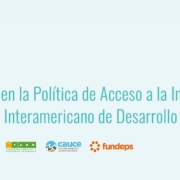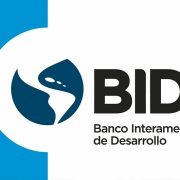New analysis on regulations in development institutions present in Latin America
Together with the rest of the organizations that make up GREFI, we publish a comparative analysis of the regulatory frameworks of the main institutions that finance development in Latin America, with a focus on the similarities and differences between traditional, emerging and chinese banking institutions.
“Below, we offer a google translate version of the original article in Spanish. This translation may not be accurate but serves as a general presentation of the article. For more accurate information, please switch to the Spanish version of the website. In addition, feel free to directly contact in English the person mentioned at the bottom of this article with regards to this topic”.
The Regional Group on Financing and Infrastructure (GREFI), made up of FUNDEPS, DAR, Ambiente y Sociedad and Fundar, recently published its latest research paper on the regulations of international financial institutions (IFIs): Comparative Analysis of IFIs regulations Present in Latin America This is a comparative analysis that takes as an object of study the operational policies of different institutions: the Inter-American Development Bank (IDB), the World Bank (WB), the Inter-American Investment Corporation (IIC), the Corporation Financiera Internacional (CFI), the Development Bank of Brazil (BNDES), the Development Bank of Latin America (CAF), the Development Bank of China (BDC) and the Chinese Bank of Exports and Imports (ExIm Bank). The essential objective was to be able to achieve a comparison between those traditional institutions, new development institutions and Chinese institutions. The anchoring of this study is given by the number of new actors that today are part of the financial and investment scenario in Latin America.
The analysis was carried out on four axes: access to information, citizen participation, indigenous peoples and social and environmental safeguards. The indicators for these categories were obtained from the best international practices in each of these subjects (the OAS model law on access to information, ILO Convention 169, among others). Each category was divided into different elements that received a score. The product of this work is presented in a statistical way, expressing at what level (percentage) the policies of the institutions achieve the highest standards.
The main results obtained in the study report that two banks categorized as traditional IBRD-BM (86%) and CFI (64%), in addition to an emerging CAF bank (62%), obtain the highest ratings. Among institutions rated less than 50% are two traditional IDB banks (45%) and CII (26%), one emerging bank BNDES (17%) and two Chinese banks BEIC (8%) and BDC (0%). An interesting finding is that only in the categories of traditional banking and emerging banking institutions with relatively high rating are observed. In contrast, Chinese banks stand out with the lowest evaluations according to the proportion of estimated adequacy. This is partly explained by the BDC bank, which does not obtain a qualification in any thematic axis, since, due to lack of access to its regulations, these are not known. (See the specific chapter on CDB).
More information:
Full publication Comparative analysis of the regulations of IFIs present in Latin America
Contact:
Agustina Palencia: agustinapalencia@fundeps.org











